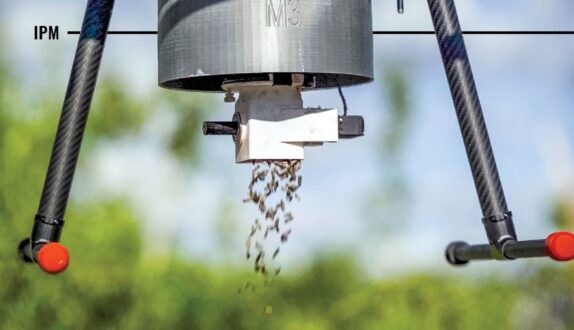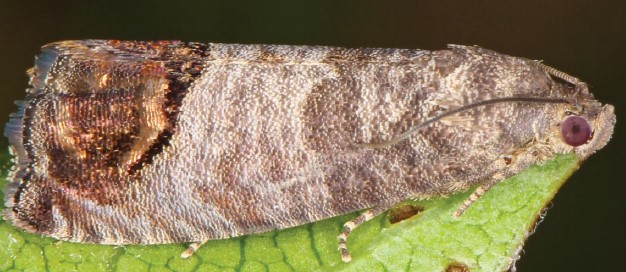Dec 20, 2023Grant seeks to sterilize insects for IPM programs with X-rays
A company that specializes in using drones to release sterile insects to disrupt mating cycles is working with the U.S. government to transition the technology to sterilize the pests from gamma irradiation to X-ray irradiation.
It’s switching from nuclear technology to an X-ray machine in a dentist’s office.
M3 Agriculture Technologies, which runs the largest U.S. sterile insect technique (SIT) program, received a $1 million grant from the National Nuclear Security Administration’s Office of Radiological Security.


The goal is to reduce security risks posed by radioactive sources and expand SIT programs across the country by allowing private companies to use the X-ray technology. The newer technology is also much cheaper: cobalt-60 “pencils,” thin metal tubes that house the radioactive material that is used in most SIT programs, primarily come from Russia, and prices have doubled to $900,000.
M3 will work with Sandia National Laboratories on the process. By this time next year, the company plans to have started releasing X-ray treated insects, although specific orchards for the releases haven’t been chosen yet.
Currently, the USDA oversees the production of sterile insects via gamma-cell technology.
Nathan Moses-Gonzales, M3’s CEO, said changing to X-rays from gamma-cell irradiation is “democratizing technology” by making the process available to the private sector.
“There is ample scientific literature to support the use of X-rays to sterilize insects,” Moses-Gonzales said. “The challenge has been that there hasn’t been any sort of a demonstration on an operational scale. That’s where we leave the lab, as it were, and focus on fields and the commercial side of things.”
M3 has obtained one of the machines, and a company has granted in-kind use of another. There are plans to establish a center of operations in California, which lacks gamma-cell facilities. The location could be in Fresno or Parlier, home of USDA-Agricultural Research Service personnel and lab facilities.
M3 specializes in the release of sterilized codling moths, a major apple and pear pest, and sterilized navel orangeworms, which targets almonds and pistachios. When M3 started on the grant process a year ago, it began working with the California Apple Commission, Washington Tree Fruit Research Commission, American Pistachio Growers and California Almond Board.
Growers are increasingly finding themselves “between a rock and hard place” when it comes to pesticide regulations, said Moses-Gonzales, who sees SIT programs as a way to achieve several objectives. Fewer chemicals being used means export countries with strict pesticide regulations are an option. The tech does not add to the growing resistance of pesticides targeting insects, and remains an option for organic growers because the insects were not genetically modified to achieve sterilization.


“We think that if we can go from large facilities to modules, from fixed-wing aircraft to drones, from gamma cells to X-rays, not only can we replace these gamma cells much faster around the planet, we can also proliferate these tools that much quicker,” he said.
Derek Bell, M3’s business development manager, said the outcome of the project has global implications, reducing overall costs and risks of an integrated pest management tool.
“This is a pivotal moment for our company and for the future of sterile insect technique,” Bell said. “Coming out of this project, we intend on deploying our X-ray modules on or near our farm sites in the near future.”
Tanner Louen, an M3 business development manager, referenced the Sustainable Pest Management Roadmap for California. The state’s Department of Pesticide Regulation and California Environmental Protection Agency calls for elimination of “high-risk pesticide” use by 2050. The “European Pesticide-Free Agriculture in 2050” campaign is also calling for sweeping changes in what will be allowed.
“By localizing the mass-rearing efforts of the invasive codling moth and navel orangeworm through M3’s modular concept, these small-scale, easily deployed facilities will establish a dominant stronghold over the industry’s diminishing list of combative alternatives,” Louen said.
— By Chris Koger, managing editor














